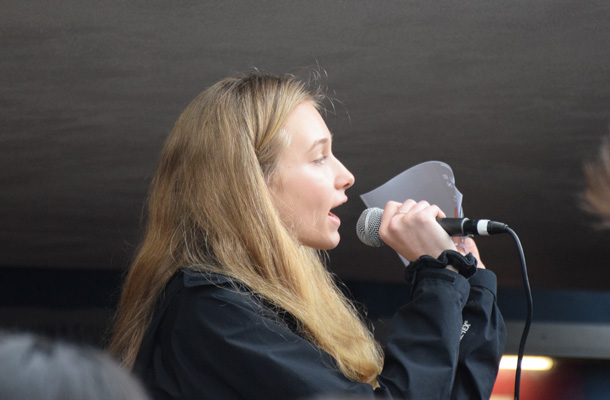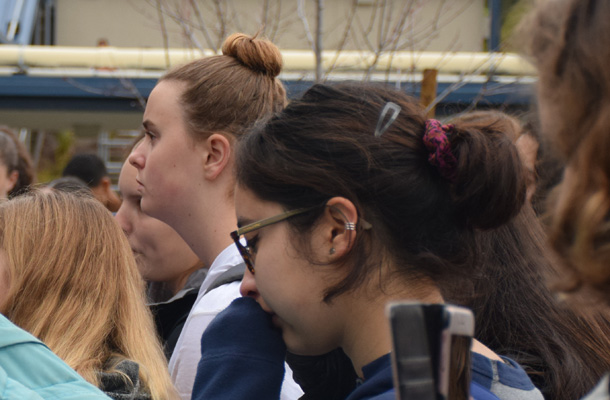“Walk Up” Message Falls Short
March 20, 2018
An estimated 1 million students walked out of their classrooms for 17 minutes at over 3,000 schools nationwide, including at Campolindo, on March 14, according to Bustle. The event was in response to recent school violence and the increasing dissatisfaction among young people for the job legislators have done to improve campus and community safety.
Much of the movement has been coordinated through social media sites like Twitter, and has turned attention toward violence prevention, including programs that promote inclusiveness on school campuses. One such campaign uses the hashtag “#WalkUpNotOut.”
The idea is that making connections with lonely classmates will prevent violence in schools because teens will not feel compelled to attack the society that has excluded them. “Walk up to the kid who sits alone and ask him to join your group” and “walk up to someone and just be nice,” are two posts shared via twitter.
It is no secret that high school culture can be brutal. With rampant bullying it is a difficult time for many adolescents.
Nikolas Cruz, the now infamous student who shot 17 people at Marjory Stoneman Douglas High School in Florida, was referred to as a “broken human being, a broken child” by his defense attorney, according to CBS.
Unfortunately, #WalkUpNotOut is a gross oversimplification of the problem. While walking up to people and befriending lonely classmates is a wonderful idea, and the power of human connections should not be underestimated, it is not a magic bullet in the face of America’s gun violence problem.
Of course, it is important to be kind to classmates. It is important to connect with peers who seem lonely or upset. It is important to help and recognize people who are struggling.
In most cases though, school shootings aren’t simply the outcome of hostility towards classmates but stem from deeper psychological issues that require more work that just student outreach to solve.
The perpetrators of the Columbine High School shooting that occurred in 1999 were originally called “unpopular” teens who were seeking “revenge” by the media. Yet 10 years after the event, a CNN article stated, “The two killers were far from normal teens. [Eric] Harris was a psychopath and [Dylan] Klebold battled depression, according to psychologists cited in the book [Columbine]. Even so, they also weren’t the extreme social outcasts and loners depicted in the early days of media coverage.”
According to NewsWeek, over 1/4 of American high school students report being bullied, and approximately 200,000 have brought some type of weapon to school. “But only a few will ever carry out a school shooting,” said Peter Langman, a psychologist and school shooting expert who added, “Most kids in high school and middle school are teased at some point, maybe feel excluded. That does not create mass murder.”
In addition, the #WalkUpNotOut movement inadvertently blames the victims of the Parkland, Florida shooting. It implicitly accuses the students of creating an unfriendly, unwelcoming atmosphere in which the shooter felt the urge to murder innocent teens and teachers. In reality, Cruz was mentally ill, as numerous people had reported his unusual behavior to the FBI, and he had shockingly easy access to assault rifles.
Perhaps, instead of #WalkUpNotOut, we should say “WalkUpAndOut. Creating a warmer, more friendly environment in schools and communities will surely be beneficial. Nonetheless, it is still important to recognize that walking up and befriending outcasts will not solve the complex issue of gun violence and school shootings.


